Do you remember your childhood when the days seemed sunnier and longer? Perhaps now, the smell of pancakes with strawberry jam or a particular flower takes you back to your grandparents’ place. In those memories, your grandparents seem younger and healthier, which was definitely the case – the presence of children makes the elderly more active and reminds them of wonderful days gone by. So, it wasn’t surprising that when a nursery opened in an elderly care home, both age groups saw immense benefits.
More info: Facebook
Sadness and loneliness among elderly people at this care home are becoming a thing of the past thanks to new, innovative ideas
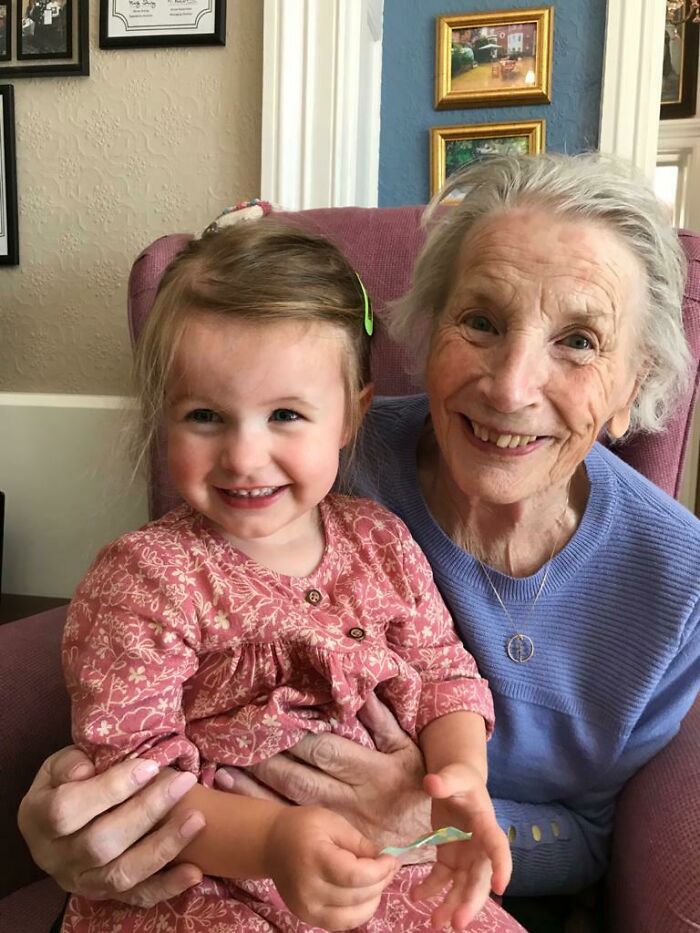
Care homes have had a negative reputation for a long time as the place people seemingly dumped their elderly relatives so they wouldn’t have to care for them anymore. Luckily, this is rapidly becoming an outdated outlook with the introduction of modern care homes where seniors are able to lead fairly independent lives, surrounded by professional staff and their peers.
However, despite the best possible care and the most attentive staff, it can get a bit lonely and repetitive being surrounded by the same people. That’s why elders love when nurseries or schools organize visiting days where young and old can hang out together, play and learn from each other.
To further the benefits of intergenerational relationships, Belong, a nonprofit operator of senior homes, opened a nursery in their care village and oh boy, the results were incredible.
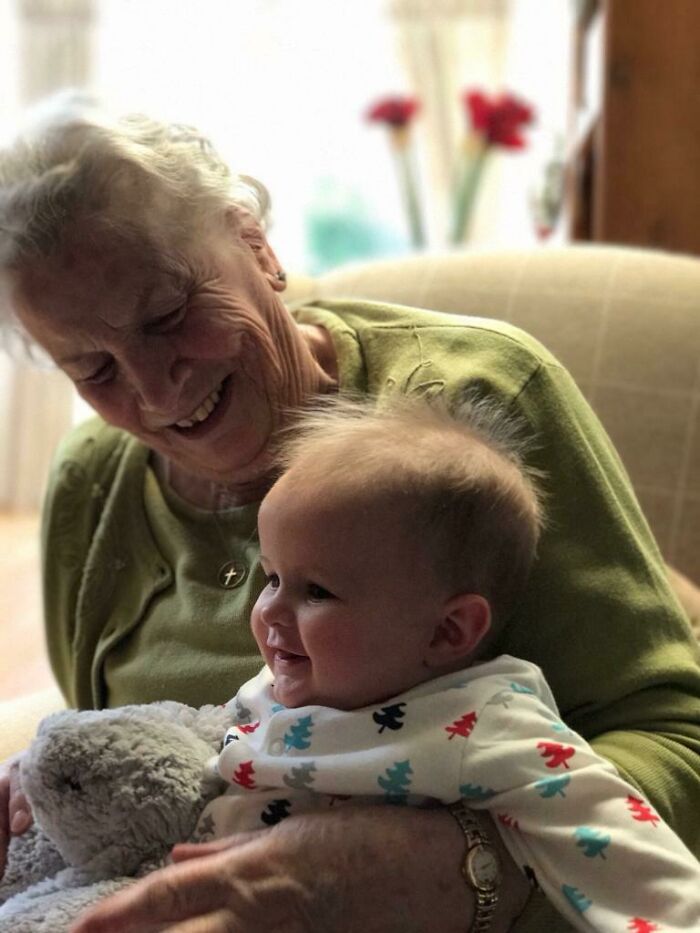
Care homes or care villages often incorporate various techniques to keep the elderly happy and slow the progress of dementia
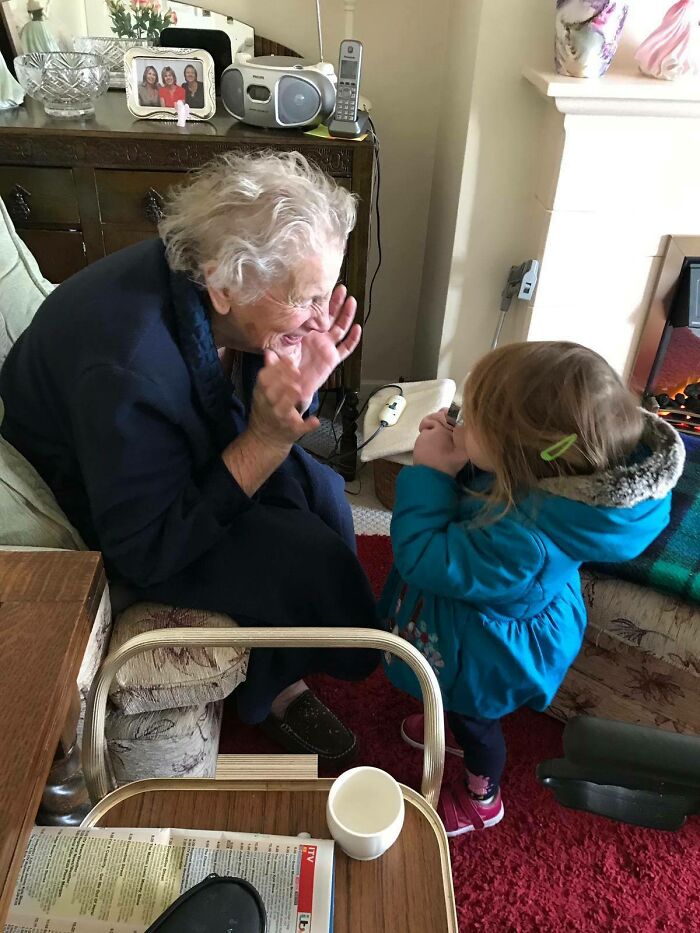
If raising a child takes a village, then the little ones at The Nursery in Belong have nothing to worry about. Not only they are in the care of attentive kindergarten teachers, but they also get to hang out with adorable grandmas and grandpas who have all the patience in the world to help them learn how to draw a dog or assemble a difficult puzzle. Plus, they usually have a good reserve of stories that kids find fascinating.
As for elders, spending time with children not only improves their moods but also other massive benefits. Constant stimulation and loads of fun are known to delay the progression of dementia, and who has more energy to provide those than a bunch of cheerful kindergarteners?
On a typical day, elders and youngsters spend a good portion of the day together working on arts and crafts, doing fun exercises, sharing meals and crashing around the afternoon for a well-deserved nap.
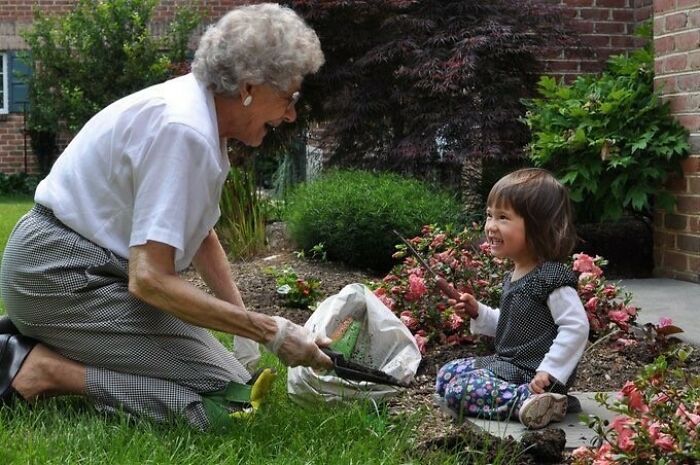
Seniors especially benefit from interactions with young kids – they keep them on their toes and bring a lot of joy
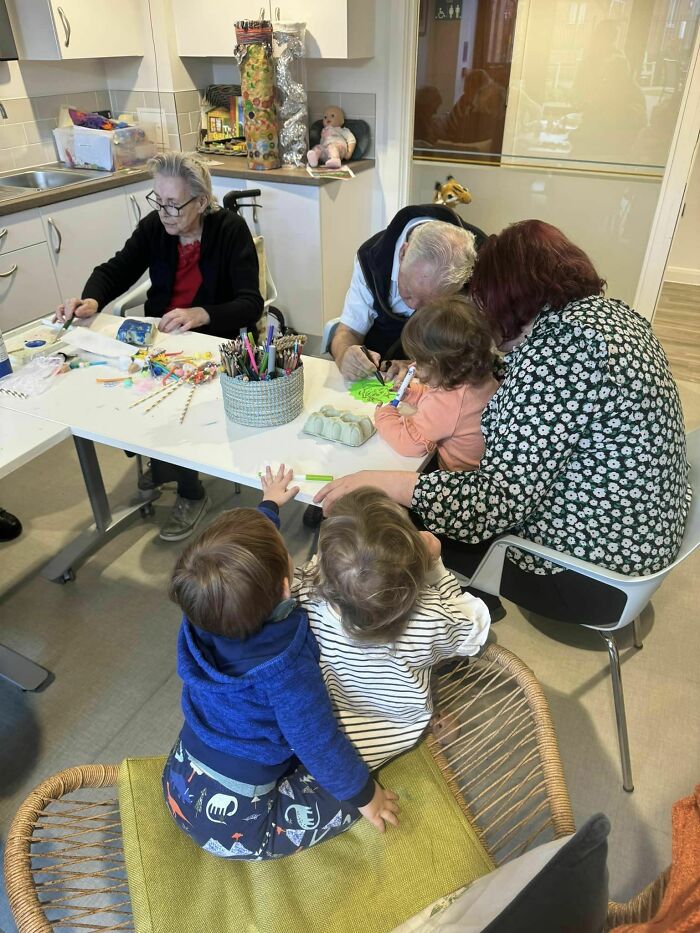
A care village in England opened a nursery on their premises where kids spend most of their day interacting with elders
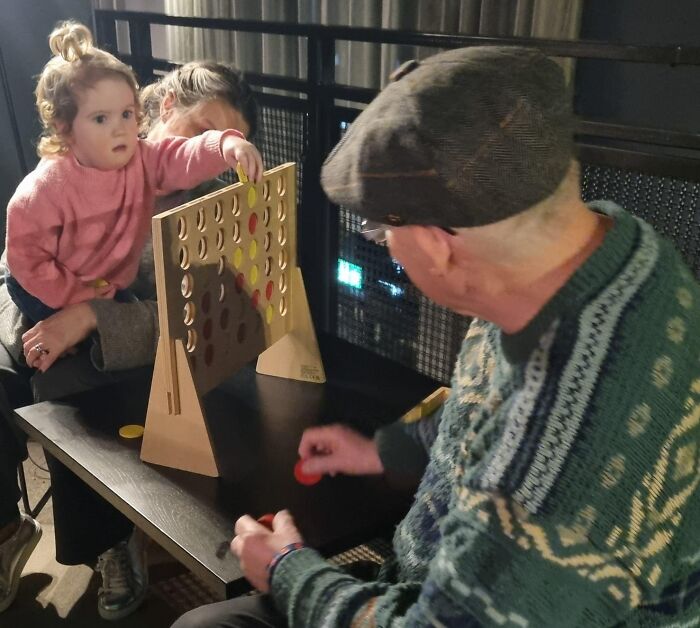
Belong villages are gaining popularity and rapidly expanding. Lord Mayor of Cheshire, Sheila Little, was welcomed in to declare the one in Cheshire officially open. She couldn’t hide her fascination, saying:
“This is a particularly exciting and innovative development as it includes a nursery, which benefits both the children who attend and the residents.”
Such facilities are a far cry from what dementia care homes used to be like. Chester village has six family-sized 24-hour care households, 23 independent living apartments and, of course, the children’s nursery.
In the center, there are various amenities such as a bistro, hair salon and a gym where residents and visitors can hang out together in a safe and welcoming environment. Getting old seems less scary now.
Centered around a vibrant hub of amenities, the site is open to the public, creating a bustling environment with customers from the local community.
They do arts and crafts, exercise and share stories about their daily lives – both parties find it very interesting
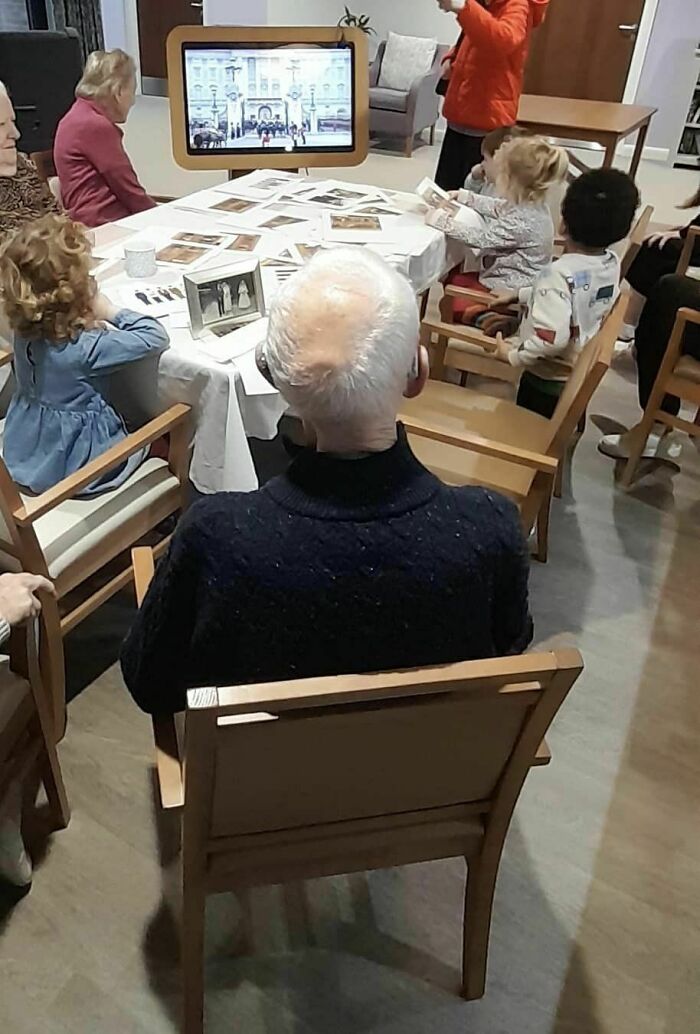
But why is this working? We all grew up with the stereotypical portrayal of angry grandpa Simpson living a care home, who just wanted peace and quiet. Well, as mentioned before, having rambunctious children around has proven benefits on mental health. As dementia progresses, the elderly lose their brain functions and activities such as reading classic books or painting masterpieces become more and more difficult. A lot of them just give up trying after multiple unsuccessful attempts.
With children by their side, seniors are able to relax and enjoy said activities at a much lighter level. Once again, they are able to find joy in reading books, albeit about farm animals. Once again, they concentrate on the process of making art instead of demanding perfection. And who’s to say that a weirdly shaped daisy does not belong in the art gallery?
Both the young and elderly benefit from intergenerational friendships
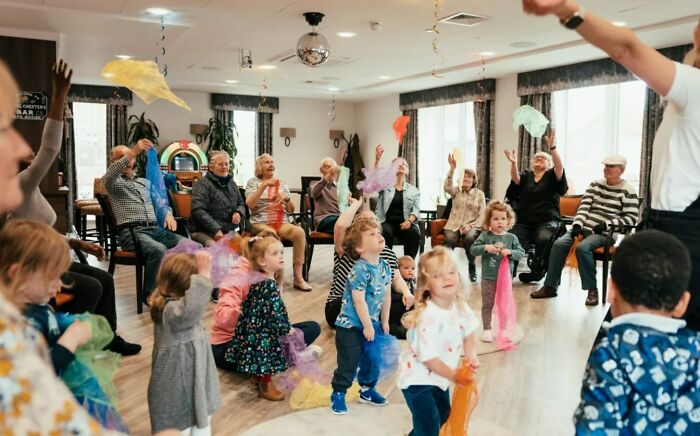
We would probably need five articles to write about all the benefits of intergenerational interactions, but here’s a summary of just a few main ones:
- Improved mental health and physical health;
- Decreased loneliness;
- Sense of purpose;
- Opportunity to learn about modern technologies.
Little ones also benefit from their senior friends:
- Boosts creativity;
- Improves cognitive skills;
- Teaches respect for differently abled people;
- New skills such as baking or gardening.
Do you have any elderly friends? What stories have they told you, or maybe you’ve learned some neat tricks from them?
People love the idea and want to see more initiatives like this











